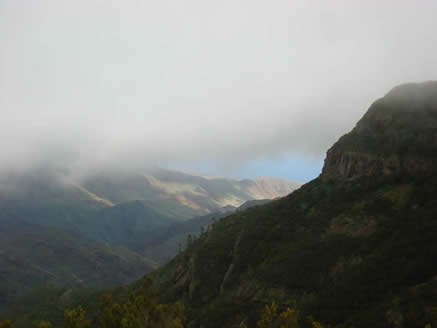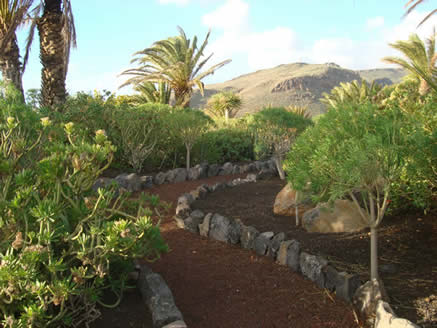Casualty List
18 February 2009
We can expect a spate of obituaries and post mortems in the months to come. How many rash acacias and imprudent olives will have let their proprietors down in the snow and ice? The final toll will not emerge until summer; plants that look like Monty Python’s parrot can have a chance of battling back.
The damage here has been, as far as I can yet see, simply physical – and fairly brutal. Snow can reveal all too clearly which trees come from regions with regular snowfalls and are equipped to survive it. One that doesn’t is the Monterey pine from California, Pinus radiata . Its branches are enormously heavy in any case. Add a hundredweight of snow and they are too apt to snap or tear away. They were the only pines to suffer at Saling.
Spring, glimpsed
11 February 2009
There was a day, just before the snow, when I distinctly smelt that most spine-tingling smell of all, the smell of growth. It must provoke a hormone rush, endorphines or some chemical that sends well-being shooting through your system. There is no describing the essence of earth and plants in action. Does it emanate from some particular plants? Or from the soil? Is it a combination of many traces of scent? I know my reaction is like a gear change to lower revs, and a change of spectacles at the same time. I focus on different things.
Polypotato
30 January 2009
Disposing of packing materials gets harder and harder. Recycling them starts with the problem of identity: is this horrible white stuff that sticks to everything polythene, polyurethane, polypropylene, polystyrene? I think we should be told. And why can’t protective packaging be biodegradable? It's bad enough with the space available in the country to handle it and store it while you figure out what to do with it, but in a city flat it is a serious problem.
Meet Laurisilva
27 January 2009
‘A fearsome maze of eerie crags’ is how one guidebook describes La Gomera. That phrase alone would have tempted me.
I keep hearing different accounts of the Canary Islands: their heaving airports, their lava landscapes, the smell of Ambre Solaire on black sand beaches …… Nobody had said that Spain’s highest mountain (admittedly no Mont Blanc) is on Tenerife, and only one friend, years ago, that La Gomera, 20 miles across the water, manages to include a rain forest in its astonishingly varied flora.
The mid-Atlantic tropics, when I thought about it, should have pretty special conditions. Trade Winds refreshing sun-baked soil – fertile, too, with ancient lava – it’s a promising recipe. For someone who avoids hot climates the idea of a misty mountain refuge from the coast was pretty attractive too. Breakfast in the garden, botanizing in the clouds (or, if no clouds, with distant views to other islands and the snow-capped Mount Teide), tea by the swimming pool and a late Spanish dinner sounded perfect. It was.
La Gomera has the islands’ biggest remaining area of the peculiar indigenous forest known as laurisilva: 10,000 jungly acres. To call it a rain forest is not quite accurate; strictly speaking it is cloud forest, meaning that the trees collect the moisture from the overladen air; the perpetual drip from their mossy branches, rather than conventional precipitation, doubles the measurable 'rainfall'.
‘Laurel’, Laurus azorica, closely related to bay, is the main theme, supported by half a dozen superficially similar evergreens (the most recognizable being Viburnum rigidum) and the very different tree heather, Erica arborea. In certain exposures at a certain altitude in the hills you are in heather as dense as on a grouse moor – the difference being that it is 30 feet high. One should be there in March to smell it flowering.
Not much of the original forest, growing 60 or 70 feet high, is left: a few stands in precipitous north-facing gullies carpeted with moss or ferns, moss hanging in tresses from the trees. Among the ferns is the far-spreading Woodwardia radicans I remember from the oriel table in the hall at Great Dixter, where Lloyd once kept a specimen three yards across. Absurdly, high in these hills, and on slopes requiring, you would think, the farmers to abseil, smartly built stone walls support narrow terraces now abandoned,
|
Weight of snow, especially if it freezes or before you can reach it to knock it off, (and especially in the windless conditions we had this month) bends and crushes any evergreen. Our worst casualty to this force of nature is a big Phillyrea latifolia, one of my favourite trees of medium stature, much like its relation the olive in its pattern of growth but with dark lustrous green leaves. Freezing snow in its broad crown tore down a quarter of its branches. It will recover.
Our most serious casualty waited until the snow had melted before it happened. The cedar of Lebanon I planted in 1980, already a twenty foot tree, to replace our elms in screening the houses nearby, has become a key plant in the garden, slowly coming to dominate the front of the house.
Last week, after a night of heavy rain, I found a big branch from near the top lying on the ground. Looking up I could see that it had left a nasty tear on the main trunk. Sure enough, two nights later in more rain, but still hardly any wind, the top fifteen feet of the tree broke at the tear and fell, crushing a young tulip tree nearby. Cedars of Lebanon are famous for their flat tops. Now I’ve seen precisely how it happens, without violence. A design fault, you might call it.
At the snowdrop moment the ground come up to meet you anyway. Suddenly you are concentrating on plants three inches high whose flowers bashfully look the other way. I go down on my haunches (creak) and use my fingers to rake dead leaves aside, my forefinger and thumb to pull pine needles out of the pale clump, all my attention fixed on the microcosm at my feet.
Two days later there was no microcosm to be seen. The brilliant generalization of snow had obliterated detail. It held its perfection for 24 hours, reducing the garden to lumps and hollows, turning the apple trees to crystal chandeliers, then started to dissolve and pockmark, smudge and spoil. There is no pleasure in old snow, in shovelled piles that refuse to melt. In three days I was resenting it hiding the green and brown world where growth was carrying on unseen.
Why this here? Because I have just received a parcel of handsome white hellebores from Woottens Plants in Suffolk www.woottensplants.co packed in what I first took, with chagrin, to be expanded polysomething, and quickly discovered is nothing of the kind, Michael Loftus of Woottens uses a product called Bionatura pellets made of corn and potato starch that dissolve in water. They are supplied in 75 litre bags by a company called Macfarlane Packaging. I give the details in the hope that everyone who sends fragile goods by carrier or post will consider them. Wine-merchants please note, too.


showing only traces of corn or overgrown vines. The bananas and tomatoes at lower levels still thrive, but the former athlete-farmers of the mountain now work in the hotels, or in Venezuela.
Ornamental gardening, of course, is a novelty on such an indigent (until recently) island. The style seems to have been set by an artist sometimes called the Picasso of the Canaries, Cesar Manrique. He created a spectacular mirador commanding a deep fertile valley, a terraced trench 2000 feet deep with the Atlantic at its foot, bristling with the Canaries native palm tree, singly or in groves, and stratified with green terraces like vegetative sedimentation.
The mirador grows from the cliffs. Its gardens merge imperceptibly with the mountain plants. Are these aloes, agaves, cistuses, euphorbias, echiums wildlings or horticulture? Bougainvillea gives the game way, but only when savage spikiness forms discernible patterns do you detect design.
We stayed in the parador at San Sebastian, the island capital (and launch-pad for Columbus: the courtyard of the Tourist Office contains the well where he drew the water to baptize America). Spain’s state hotels (or some of them) brilliantly project an image of long-settled aristocracy. You are a guest in a solid, slightly faded, country mansion – in this case with Manrique-inspired gardens rich with endemic plants, shaded by palms and the luxuriant deep green canopy of a pale-trunked ficus. Paths wind and steps climb between curving beds mulched with grey, rusty and pink volcanic gravel, setting off the strong domes and spikes of desert plants. I have not been an enthusiast for palm trees in the past, but Phoenix canariensis is a magnificent tree to have outside your bedroom window.
|